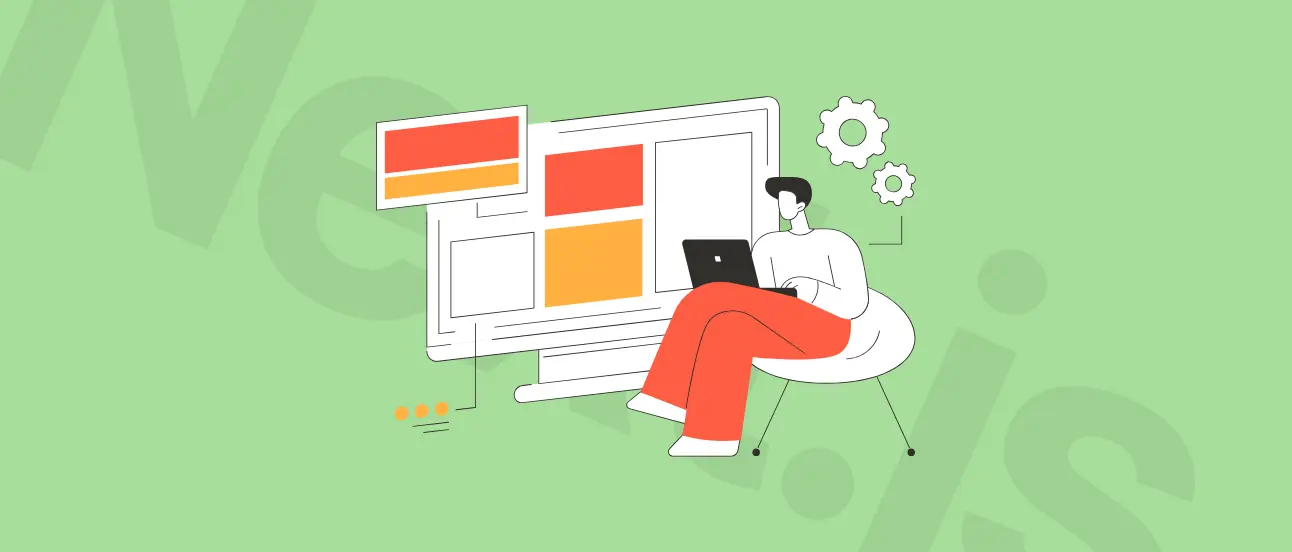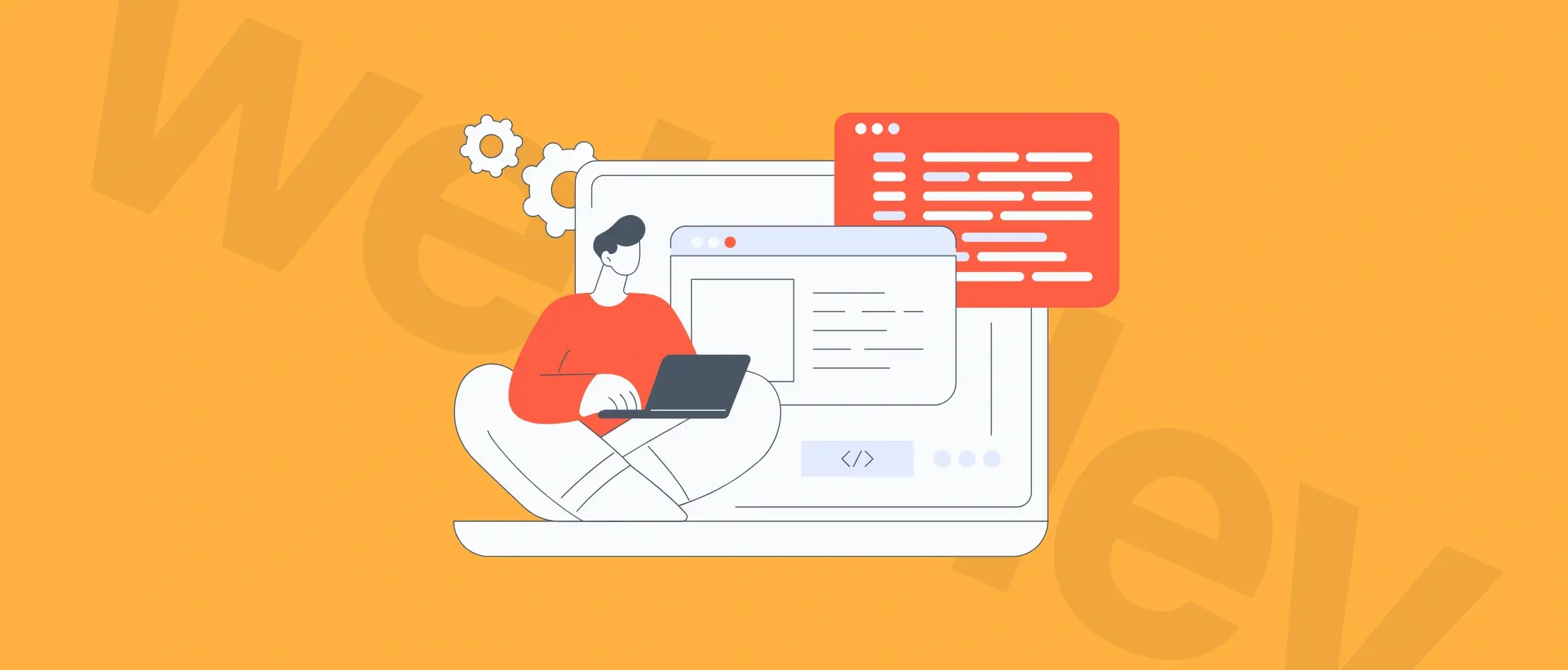How Much Does Website Development Cost and How Long Does It Take?
Planning a website development project can feel overwhelming, especially when you're trying to balance quality, functionality, and budget constraints. Understanding the real costs and timelines will help you make smart decisions and avoid expensive surprises.

Poor planning can lead to:
Budget overruns of 50% or more
Project delays extending months beyond original timelines
Compromised functionality that hurts user experience
Security vulnerabilities that risk your business reputation
Accessibility compliance issues that could result in legal problems
Let's walk through everything you need to know about website development budgeting and timeline planning, so you can launch a successful project that delivers real results for your business.
What Drives Website Development Costs
Before we dive into specific numbers, it's helpful to understand what makes websites more or less expensive to build.
1. Artificial Intelligence is changing everything
AI tools are making websites faster and cheaper to build. Some development tasks that used to take weeks now take days. However, if you want AI features built into your website (like intelligent chatbots or personalized recommendations), expect to pay significantly more. It's important to understand the difference between using AI to build your site versus building AI into your site.
Using AI to build your website can reduce development time by 20-55% and lower your total project cost. However, building AI into your website significantly increases project complexity and cost. Simple AI features start around $5,000-$15,000, while custom AI models can cost $50,000-$200,000+.
Before investing in AI features, ask yourself: Will this directly increase revenue or reduce operational costs? Do you have enough data to make AI effective? Can you measure and improve AI performance after launch? Often, simpler solutions achieve 80% of the benefit at 20% of the cost.
2. Mobile-first design is now required, not optional
With most people browsing on their phones, every website must work perfectly on mobile devices. It's built into the foundation of modern web development.
3. Accessibility isn't optional anymore
Courts are increasingly requiring websites to be accessible to people with disabilities. This means your website needs to work with screen readers, have proper color contrast, and meet other accessibility standards. It's legally required.
4. Performance matters more than ever
Google now uses your website's loading speed as a ranking factor. Slow websites not only frustrate users but also hurt your search engine visibility.
Capitalise needed a modern website to replace their rigid legacy CMS and enable data-driven growth. We created a fast, headless platform with built-in A/B testing. Easy to experiment, optimize, and boost conversions.
5/5
Clutch review
90+
Lighthouse
Robust
A/B testing

How Much Should I Realistically Budget for a Professional Website?
Small business websites: $1,000 - $10,000
These are professional informational sites with basic pages like Home, About, Services, and Contact. They include contact forms, mobile responsiveness, and basic search engine optimization. Most small service businesses fall into this category. Timeline: 1-4 weeks.
E-commerce stores: $3,000 - $75,000+
Online stores are more complex because they need shopping carts, payment processing, product catalogs, and inventory management. A simple store using Shopify might cost $3,000-$10,000 (more about how much a Shopify website really costs), while a custom-built store with advanced features can easily reach $50,000 or more. Timeline: 4-10+ weeks.
Corporate/enterprise websites: $10,000 - $50,000+
Larger businesses need more sophisticated sites with custom designs, advanced security, user portals, and integrations with other business systems. These projects require more planning and specialized expertise. Timeline: 4-8 weeks.
Web applications/SaaS: $10,000 - $150,000+
If you're building a web-based application or software service, expect the highest costs. These projects involve complex programming, user dashboards, databases, and ongoing feature development. Timeline: 2-6+ months.

Feeling Lost in Developer Speak?
No more confusing jargon or surprise costs. Get straight talk about your website project from someone who actually speaks your language.
The Hidden Costs Nobody Talks About
The biggest mistake businesses make is focusing only on the upfront development cost. Your website will have ongoing expenses for as long as it exists, and these can add up quickly.
Web hosting ranges from $50 to $1,500+ per year. Cheap shared hosting might work for a simple brochure site, but as your traffic grows, you'll need better hosting.
Maintenance and updates typically cost $500 to $50,000+ per year. This covers security updates, bug fixes, content changes, and general upkeep. A typical small business spends $1,000-$6,000 annually on website maintenance.
Domain names cost $10-$60 per year for standard domains, though premium domains can cost thousands.
SSL certificates (which enable secure HTTPS connections) range from free to $300+ per year. Basic certificates are often included with hosting, but businesses handling sensitive data may need premium certificates.
Marketing and SEO is crucial because a website without visitors is worthless. Most businesses spend $500-$10,000+ monthly on digital marketing to drive traffic to their site.
Here's a reality check: A $5,000 website with $2,000 in annual maintenance costs will actually cost you $11,000 over three years. Compare that to a $8,000 website with $500 in annual maintenance costs—the total three-year cost is only $9,500. The more expensive option is actually cheaper in the long run.
Note that development costs vary by location, creating significant budget opportunities. European developers often deliver excellent quality at 40-50% savings. That’s why businesses successfully use a hybrid approach: hiring local experts for strategy and project management while using high-quality offshore teams for development, achieving cost savings while maintaining crucial communication where it matters most.
Planning Realistic Timelines for Your Website Project
Every professional website project follows a similar path, regardless of size or complexity. Understanding these phases helps you plan better and know what to expect.
| Project phase | Simple/brochure Site (e.g., portfolio, small business) | Corporate/E-commerce site | Complex/web app (e.g., SaaS, custom portal) |
|---|---|---|---|
| Planning & research | 2-5 Days | 3-10 Days | 1-3 Weeks |
| Design (UI/UX) | 3-7 Days | 2-4 Weeks | 3-6+ Weeks |
| Content creation | 5-10 Days (Parallel) | 2-3 Weeks (Parallel) | 3-4+ Weeks (Parallel) |
| Development | 1-2 Weeks | 4-8 Weeks | 8-24+ Weeks |
| Testing & QA | 3-5 Days | 1-2 Weeks | 2-4+ Weeks |
| Launch | 1 Day | 1-2 Days | 1-2 Days |
| Total estimated timeline | 1-4 Weeks | 4-10 Weeks | 3-6+ Months |
Phase 1: Planning and research (5-12 days)
This is where your team figures out exactly what you need. They'll define your business goals, research your target audience, analyze competitors, and create a detailed sitemap.
It might seem like a lot of time for "just planning," but this phase prevents expensive changes later. Projects that skip thorough planning are much more likely to go over budget and timeline.

Marta Sulikowska
Co-CEO of Naturaily
Phase 2: Design (1-4 weeks)
Your development team creates the visual blueprint for your website. This starts with simple wireframes showing where everything goes, then moves to detailed mockups showing colors, fonts, and imagery. If you're using a pre-made template, this phase might take just a few days. Custom designs with multiple revision rounds typically take 2-4 weeks.
See how we deliver web development solutions that empower you to grow
Learn more
Phase 3: Content creation (1-3 weeks, often parallel)
Someone needs to write all the text for your website, source or create images, and prepare any videos.
Copywriting for all pages
Image sourcing or creation
Video production if needed
Content optimization for SEO
This phase is the most underestimated and frequently causes delays. Having content ready before development begins can accelerate your project by 2-3 weeks.
Phase 4: Development (2-6+ weeks)
This is where developers actually build your website. They write the code for both the front-end (what users see) and back-end (server-side functionality), set up databases, and integrate third-party services. Simple websites take 1-2 weeks, while complex e-commerce sites can take 8+ weeks.
Phase 5: Testing and quality assurance (1-2 weeks)
Before launch, your website gets thoroughly tested across different browsers, devices, and screen sizes. The team checks for bugs, optimizes performance, and ensures accessibility compliance. Rushing this phase is a false economy, as fixing bugs after launch costs much more than catching them beforehand.
Phase 6: Launch (1-2 days)
The final technical steps to make your website live. This includes configuring your domain, installing security certificates, and setting up backups. There's usually 1-2 weeks of close monitoring after launch to address any issues that arise with real traffic.
What Makes Projects Go Faster
Having content ready upfront is the single biggest timeline accelerator. When developers don't have to wait for copy, images, or other assets, they can work continuously. This alone can reduce your timeline by 25-40%.
Clear decision-making authority prevents bottlenecks. Designate one person who can make decisions and provide feedback. Multiple stakeholders with conflicting opinions create delays.
Using templates or frameworks instead of building everything from scratch can reduce development time by 40-60% while still delivering professional results.
Agile project management allows teams to work in short cycles, adapting quickly to feedback instead of waiting for lengthy approval processes.
What Causes Delays in Web Development Projects?
1. Scope creep, or what happens if I need changes mid-project?
It starts innocently: "Can we also add a blog?" or "I saw this cool feature on another site." These "small" additions can increase budgets by 30-100%.
The best defense is a detailed project scope document defining what's included. When new requests come up, have a formal evaluation process: "This wasn't in our original plan. It'll take an extra week and cost $2,500. Add it now, save for phase two, or skip it?"
Frame change requests by their impact on timeline and budget, not just feasibility.
2. Communication breakdowns
Poor communication causes over half of all project failures through unclear feedback, conflicting stakeholder direction, delayed reviews, and unconfirmed assumptions.
Fix this by designating one decision-maker who gathers input from others but provides consolidated feedback to developers. Set firm feedback deadlines and use project management tools like Asana or Trello for transparency.
Weekly status meetings with written updates keep everyone informed without constant interruptions.
3. Content bottlenecks
Development teams frequently get stuck waiting for content, copy, or images. This happens because content creation is consistently underestimated. Writing effective web copy takes longer than expected, especially when multiple people need to review and approve it.
Start content creation 2-4 weeks before you need it. Create a detailed list of every page that needs content, assign clear ownership for creation and approval, and set firm deadlines. Having content ready when developers need it can accelerate your timeline by weeks.
4. Unexpected technical complexity
This one sometimes emerges during development. A feature that seemed simple might turn out to require complex programming or integration work.
5. Third-party integration problems
Such problems can arise when connecting your website to other services like payment processors, email marketing tools, or inventory systems.

What's a Lost Customer Worth to You?
That outdated website is costing you more than you think. Let's calculate what you're losing and fix it fast.
Breaking Down Development Costs
Understanding what you're paying for helps you evaluate proposals and make informed decisions.
Design phase costs
Template-based design typically costs $500-$2,000. This includes purchasing a premium template, customizing it with your branding, and ensuring mobile responsiveness.
Custom design ranges from $2,000-$15,000+. This involves user research, wireframing, creating original visual designs, and user testing. The wide range reflects the difference between a straightforward business site and a complex user experience requiring extensive research and iteration.
Development phase costs
Front-end development (what users see and interact with) typically costs $2,000-$15,000. This includes writing the HTML, CSS, and JavaScript code, ensuring mobile responsiveness, and optimizing for different browsers.
Back-end development (server-side functionality) ranges from $2,000-$25,000+. This covers database design, server-side programming, API integrations, user authentication, and content management systems.
Common feature costs
Simple contact forms cost $200-$500, while complex multi-step forms with CRM integration can cost $500-$1,000+.
Basic e-commerce functionality starts around $2,000 for simple product catalogs and can reach $15,000+ for comprehensive stores with advanced inventory management and custom checkout processes.
User accounts and custom dashboards range from $3,000-$20,000+ depending on complexity. Simple user registration might cost $1,000-$3,000, while custom dashboards with role-based permissions can cost $10,000-$20,000.
AI-powered features represent a new premium category. Simple chatbot integration might cost $2,000-$8,000, while custom AI models for personalization or recommendations can cost $20,000-$100,000+.
Technical Considerations That Protect Your Investment
Security can't be an afterthought
Website security breaches can be devastating to your business reputation and bottom line. Essential security measures include SSL certificates, regular software updates, secure user authentication, protection against common attacks, and regular backups with tested restoration procedures.
Budget 5-15% of your total project cost for proper security implementation. Ask your developer about their security practices and how they handle updates and maintenance.
Performance affects your bottom line
Slow websites frustrate users and hurt search engine rankings. Google now uses loading speed as a ranking factor, so performance directly impacts your visibility. Essential optimizations include image compression, efficient code, content delivery networks (CDNs), and database optimization.
Target page load times under three seconds. Budget 8-12% of development costs for performance optimization, and make it a requirement from the beginning rather than an afterthought.
Accessibility is becoming legally required
Courts increasingly require websites to be accessible to people with disabilities. Key requirements include keyboard navigation for all functionality, sufficient color contrast, alt text for images, clear form labels, and text that can be resized without breaking the layout.
Include accessibility in your initial requirements and budget 10-20% of total project cost for proper implementation. Don't treat it as an add-on—build it into the foundation of your project.
How Do I Evaluate Web Development Agencies?
Here are some questions to ask every potential developer or web development agency.
What's your experience with projects similar to ours? Ask to see specific examples and talk to references from recent clients.
What's your development process and how often will we communicate? Look for structured approaches with regular check-ins and clear deliverables.
How do you handle changes and additional requests? Make sure they have a formal change control process.
What happens if the project goes over timeline or budget? Understand their policies and how they handle unexpected challenges.
What's included in ongoing support and maintenance? Clarify what happens after launch and what ongoing costs to expect.
Red flags to avoid
Quotes significantly lower than others often indicate hidden costs or corners being cut. Reluctance to provide detailed cost breakdowns or references from recent clients should concern you.
Promises that seem too good to be true usually are. Be skeptical of developers who claim they can "build anything in two weeks" or guarantee first-page Google rankings.
Pressure to sign contracts quickly without proper evaluation suggests they're more focused on closing deals than delivering quality work.
A Decision-Making Checklist for Your Website Project
Understanding what factors affect website development cost and how to mitigate risks can mean the difference between a successful launch and a budget-busting disaster. Successful website development requires balancing your business goals, available budget, timeline constraints, and growth projections.
This checklist provides a set of critical questions that business leaders should ask themselves and their potential vendors before, during, and after the website development process to ensure the project is aligned with strategic goals and set up for success.
1. Before the project begins (strategy & scoping)
[ ] Business goals: What is the primary business purpose of this website (e.g., lead generation, e-commerce sales, brand building)? How will we measure its success (KPIs)?
[ ] Budgeting: Have we calculated the projected 3-year Total Cost of Ownership (TCO), including hosting, maintenance, and marketing?
[ ] Technology strategy: Is a traditional website sufficient, or do our goals require a PWA for user engagement or a Headless CMS for future omnichannel flexibility?
[ ] AI strategy: Are we using AI tools to accelerate development, or are we building custom AI features into the site? Has the budget been adjusted accordingly?
[ ] Sourcing: Which vendor model (DIY, freelancer, agency, in-house) best aligns with our budget, timeline, and risk tolerance?
[ ] Compliance: Is full compliance with WCAG 2.2 Level AA a mandatory requirement in our Request for Proposal (RFP) and vendor contracts?
2. During the project (management & execution)
[ ] Project plan: Have all stakeholders formally approved a detailed project plan with clear, measurable milestones and a phase-based timeline?
[ ] Content: Is our content creation process on track to deliver finalized copy and assets before they are needed for development, to avoid bottlenecks?
[ ] Communication: Do we have a formal communication plan with a regular meeting cadence and a centralized project management tool (e.g., Jira, Asana)?
[ ] Change management: Do we have a formal change control process in place to evaluate any new requests for their impact on scope, budget, and timeline?
[ ] Testing: Does the project plan include a dedicated phase for comprehensive testing, including functionality, performance, cross-device compatibility, and accessibility?
3. After launch (maintenance & growth)
[ ] Maintenance plan: Do we have a signed maintenance agreement or an internal plan that covers regular software updates, security patches, and backups?
[ ] Monitoring: Are analytics tools properly installed to monitor site performance, user behavior, and KPI attainment?
[ ] Marketing: Do we have an ongoing digital marketing and SEO strategy in place to drive traffic to the new site?
[ ] Future roadmap: Do we have a long-term roadmap for future enhancements and features to ensure the website continues to evolve with the business?
Budget with Confidence
Poor website planning costs businesses thousands in overruns and delays. Get expert guidance to do it right.


